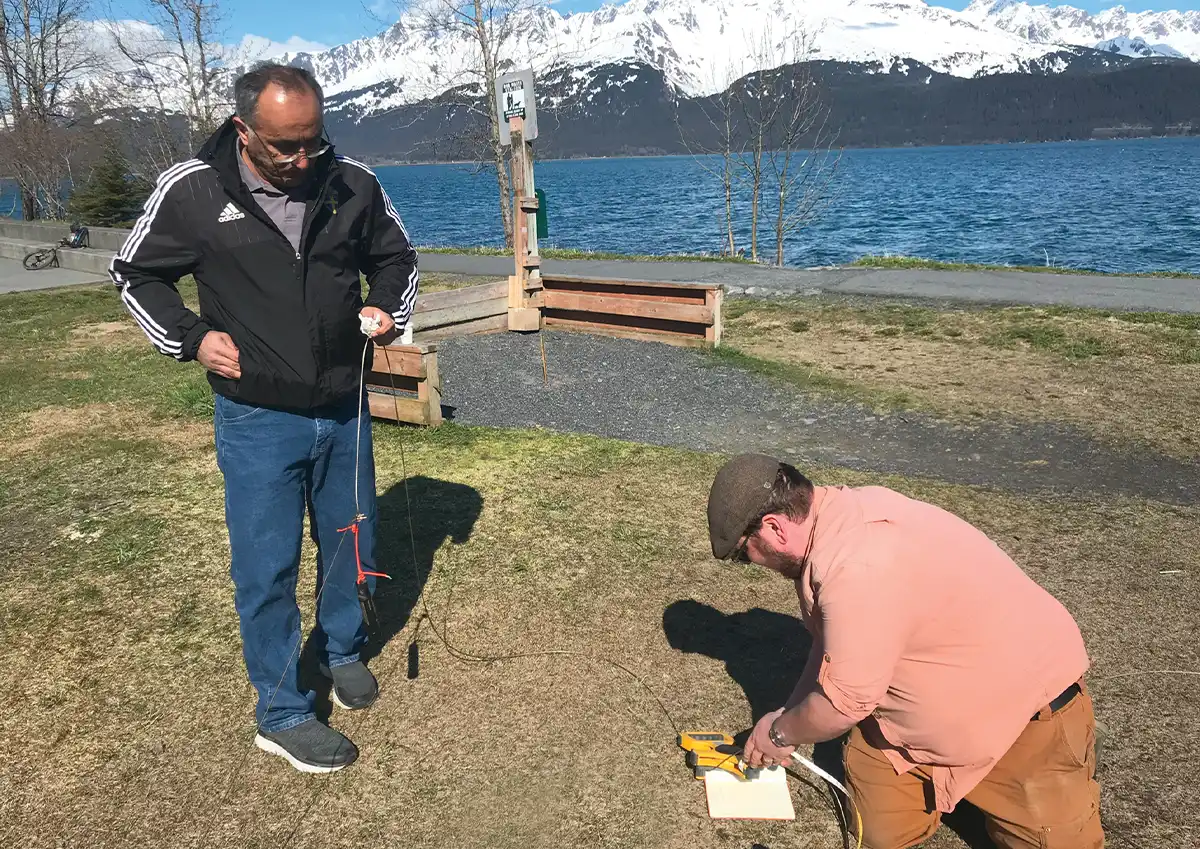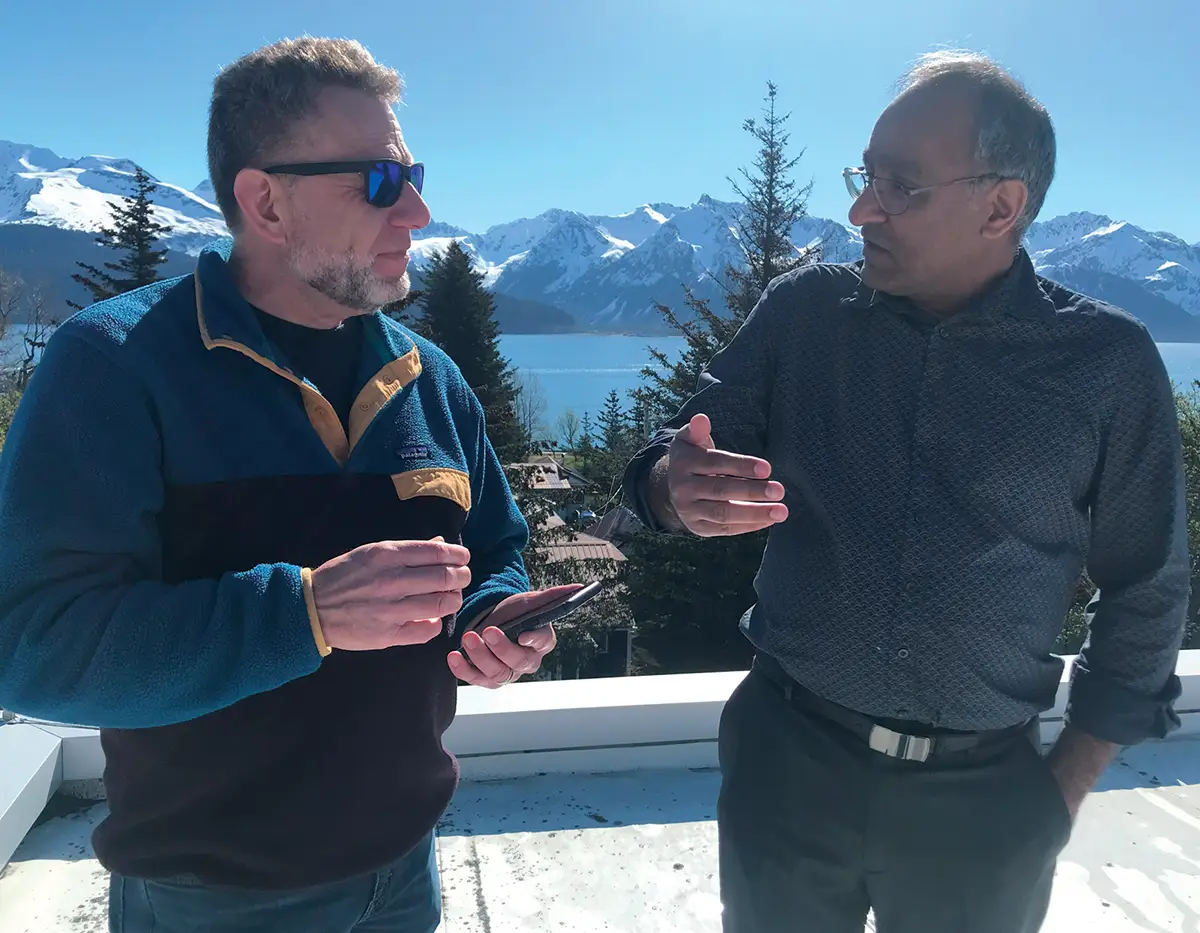he Seward Heat Loop Project is a unique alternative energy system firmly rooted in geothermal science, a concept that may sound like something out of science fiction. This innovative project, which has been in development for nearly a decade, combines tidal energy, gravel deposits, and thermal gradients to heat entire buildings. If successful, this demonstration project has the potential to revolutionize energy systems in other communities with similar natural resources.
Andy Baker, founder and owner of YourCleanEnergy (YCE), is the designer who conceptualized the unique combination of heated water from Resurrection Bay with heat pump technology to heat an entire building. In 2012, Baker designed and installed a heat pump system using a synthetic refrigerant known as R-134a; however, Baker quickly replaced R-134a with CO2 to eliminate the synthetic refrigerant’s environmental impact.
“Synthetic refrigerants contain PFAS [per- and polyfluoroalkyl substances] fluorination compounds that eventually leak from the heat pump circuit into the atmosphere,” says Baker. “By using CO2, we are preventing super greenhouse gases from rising into the air and ending up in the water.”
Resurrection Bay already heats one building complex in Seward: the Alaska SeaLife Center. However, the Seward Heat Loop Project proposes a different configuration. The center pumps seawater directly from Resurrection Bay into a heat exchanger, but the Seward Heat Loop Project relies on the thermal mass of the seabed. Vertical loops will be inserted into 200 feet of gravel that is saturated by Resurrection Bay, resulting in a consistent temperatures of 45°F. A mixture of water and propylene glycol will be piped down the hole and back up to the surface, collecting tidal and groundwater heat along the way. The mixture is then piped to the heat pumps, which turn CO2 from a liquid into vapor. The vapor is then compressed to nearly 2,000 pounds per square inch, adding significantly more heat. The hot vapor circulates through a gas cooler that transfers much of its heat into a 100°F hydronic loop that is heated up to 194°F. The 194°F hydronic water leaving the heat pumps is blended into a large building loop that is kept at 140°F to 160°F and further distributed to Seward’s library, city hall, the city annex, and the fire hall.
“Pumping seawater directly into the heat exchanger is high maintenance because saltwater is corrosive,” says Baker. “Using the tidal flush in deep gravel is a novel approach to heating buildings in coastal Alaska.”
Within six months of its formation, the Community Coalition Team won a highly competitive US Department of Energy (DOE) grant for $315,000. Out of fifty applicants, DOE selected only eleven projects for Phase 1 funding, which takes a project from concept to the point that it’s ready for construction. In September, the team will apply for $3.8 million in Phase 2 DOE funding for construction. In this round, the Seward Heat Loop Project will compete with ten other projects, of which three to six will be selected.
“We are dedicated to bringing renewable energy to Seward,” says Mary Tougas of the PACAB Heat Loop Committee. “Andy’s design is such a genius idea. It’s such a simple concept that it makes you smack your head and ask, ‘Why didn’t we think of it sooner?’”
The decision to heat only four city-owned buildings is mainly for funding purposes. Projects that benefit the public have a better chance to meet the grant criteria, so the team chose four public buildings in close proximity to one another with the most usage. Baker says making this project 100 percent public avoids inequities that could arise from creating a conventional heating district project.
“This is a demonstration project that could be expanded at some point in the future if we are successful,” says Baker.
The construction cost was estimated at $4.5 million when initially proposed in 2015. In 2022, the committee increased the cost estimate to $4.7 million for the DOE grant application. There are several reasons for the increase. Costs for materials and labor have gone up since the project started. Several add-ons, like heated sidewalks in front of the library, weren’t in the original proposal but are features community members would like included in the final project. Given all the factors, Baker hesitates to speculate on the construction cost without the final review of an estimator.
“For DOE, it’s not just about the cost,” says Baker. “This is a new process, so installing it is more costly at first. It becomes more affordable as more people adopt it and we find ways to make it more scalable.”
Sam McDavid


Sam McDavid
The memorandum also outlines the increasing cost of heating oil for the four buildings chosen for the Seward Heat Loop Project. In FY13, after the library was built, the total cost for heating all four buildings jumped to $67,605. In FY14, the price dropped slightly to $57,031 due to a global oil price crash. The library currently has an electric boiler installed as an alternative heating method; however, the oil-fired boiler is still a more cost-effective heating source. By using a ground-source CO2 heat pump system, the city estimates a 62 percent reduction in heating costs for the library compared to the existing electric boiler. For all four buildings, the reduced heating costs are estimated at around 52 percent compared to using existing heating boilers, at heating oil prices of $3.99 per gallon.
“We have few cost-effective, environmentally friendly options to heat our buildings here in Seward,” says Tougas. “Other than heating fuel, we have electricity, firewood, and a small amount of propane. We don’t have natural gas.”
Electricity from the primary grid still powers the heat pump system; however, the committee has identified solar panels as a clean energy source for this purpose. This add-on is not in the original proposal and depends on what DOE approves in the upcoming grant submission.
Recorder
PACAB Heat Loop Committee
In a committee press release, AVTEC Director Cathy LeCompte expressed her excitement about the opportunity to weave this new training curriculum into the center’s existing program.
AVTEC is a division of the Alaska Department of Labor and Workforce Development that provides post-secondary workforce training that is flexible, accessible, affordable, and responsive to the dynamic needs of business and industry and serves Alaska’s diverse communities. AVTEC delivers training statewide in refrigeration, plumbing and heating, information technology, industrial electricity, construction technology, business and office technology, and more. A course in operating and maintaining the heat loop in Seward and future deployments will fit perfectly into AVTEC’s structure.
As the Community Coalition Team works on the final requirements of the Phase 1 DOE grant, there is much optimism going into the Phase 2 application process.
“The design system used in this demonstration project has the potential to benefit all coastal communities in Alaska,” says Tougas. “We look forward to the next stage and beyond.”